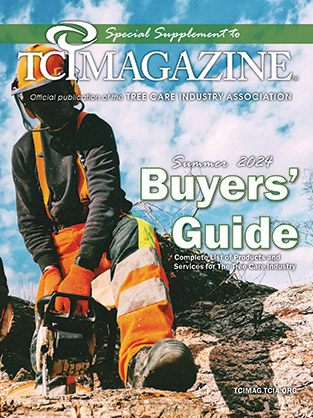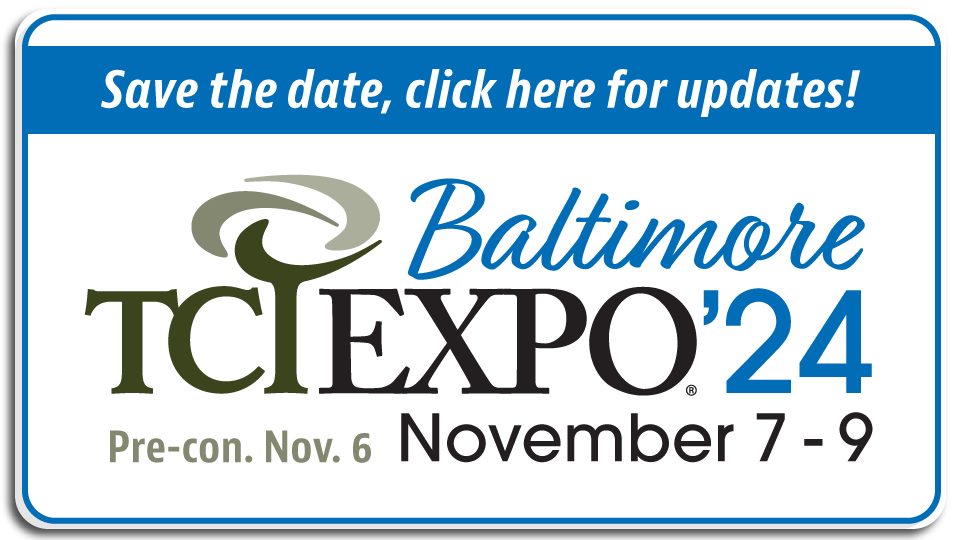Trying to Track Credentials? There’s a Tool for That!
In commercial tree care, industry-specific licenses, certifications, training and credentialing are important. The education behind the credentials builds skills, knowledge and safety habits in the field. Holding the various credentials provides proof of the training.
But human nature being what it is, employees historically have poor track records for tracking their bona fides, according to many in the industry. For people in the office, keeping track of the credentials and keeping employees up to date on their training can be a tedious task.
“I’ve shared my frustration over the years, primarily with ISA, because they don’t allow for a centralized database or web portal where I can track all of that for everybody who is a Certified Arborist here in-house,” explains Stephen Sprague, CTSP, CFO of Carroll Tree Service, Inc., an accredited, 44-year TCIA member company based in Owing Mills, Maryland. “They maintain that they’re all independent credentials and there’s no way for them to centralize the data.”
If a company has a couple of CTSPs, a bunch of Certified Arborists, some PHC people with various spray credentials, EHAP certifications, etc., how does it keep track of who has what credentials, who needs to be renewed when, who needs to get CEUs for their upcoming renewals, who needs training and more?
Sharon Greene, office manager and administrator for Brunswick, Maine-based WellTree, Inc., a 21-year TCIA member company, tracks the certificates and licenses for her 10-person company. With all of the different certifications and different trainings and different expiration dates, it can expand to include a lot of variables.
“I’m not sure what other companies do, if their licensed arborists have to maintain their licenses themselves,” Greene says. “For us here in the office, we do it for them. They sign it, but we get everything ready, send the check, pay the fees.”
For WellTree, which counts power-line right-of-way clearance among its services, this includes EHAP (Electrical Hazard Awareness Program) certification as well as multiple TCIA and other arborist credentials, driving licenses, insurance and first-aid certification.
“I have charts and graphs all over this bulletin board that I have to look at daily,” she says.
The licenses and certifications are a requirement for line-clearance work, she says, and are appreciated by homeowners as well.
But, Greene says it would be good if there was a course or other solution specific to helping arborists and office personnel keep track of all the credentials.
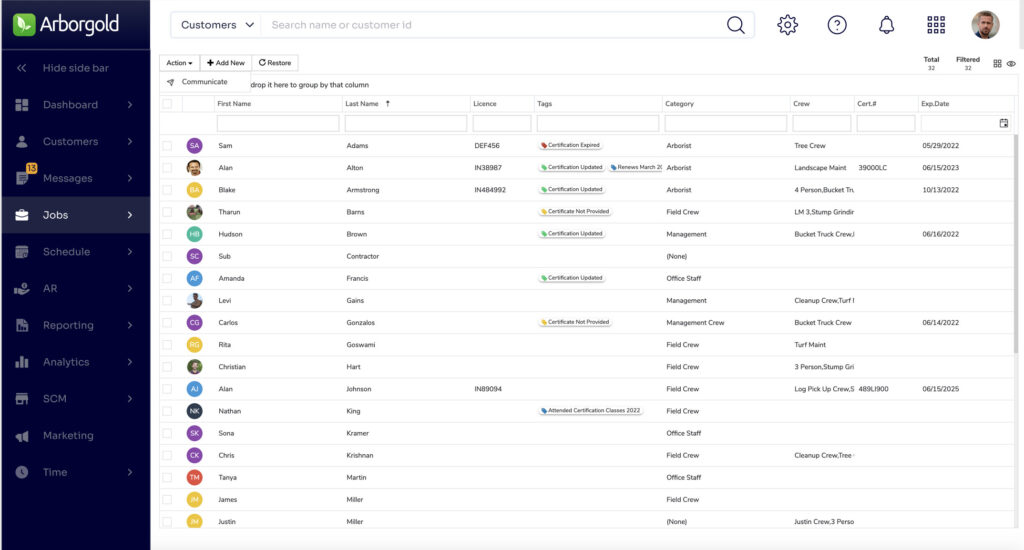
As tree care becomes less a pencil-and-paper industry and relies more on computer-based services, some human-resources executives are seeking a tech solution that manages employees’ various licenses, certifications and education requirements.
“Over the years, I’ve attempted to do that in-house using existing Microsoft software, mainly a Microsoft Access database, where I could pull reports and get notified if somebody was coming up who needed renewal or they were short on CEUs,” says Sprague, who estimates that 14 of the company’s 55 employees are ISA Certified Arborists, eight to nine are licensed tree experts and various other employees have different certifications. “Mainly, I’d just track in my Microsoft Outlook calendar when it was time to check for Maryland-licensed tree-expert CEUs or ISA CEUs, or ASCA CEUs or whatever it is. It’s pretty labor intensive, and it’s all done in-house with existing Microsoft software.”
Roughly three years ago, Sprague says, he put it on the individuals to keep their own credentials up to date. That move took away some frustration, and he’s been pleased with the response. There’s been greater than 90% compliance, and while some have needed stronger reminders, he says, “Nobody’s gotten to the point where they actually had their certification revoked.”
Recently, some TCIA members have made inquiries about whether any of the software programs specifically geared to tree care offer a solution. Based on short, anecdotal research, the answer is that some do, but not all.
Arborgold and SingleOps offer business software for tree care and other green industries, and tracking employee credentials is part of their software. Others of the handful of companies contacted either replied that they don’t offer the feature or did not respond at all.
“In our system, it’s typically the office users who will set it up based on their business,” says Sean McCormick, CEO of SingleOps. Users can load the information and it will be displayed in communications with customers, to management and in other reporting, including flagging those with credentials that are close to expiring and who haven’t renewed.
“It makes the management of it far simpler, and beyond that we have a task-management system,” McCormick says. “You can set tasks that can serve as either reminders or action items for what you need to do to either get the certification or make sure you have it renewed on time. When a user logs into SingleOps, on the homepage it shows up front and center, ‘Hey, you need to do this…,’ ‘Hey, you’re behind on your credits,’ or whatever.”
If the employee is synched to a third-party calendar, it also will be posted there, and an automations feature allows a client to send out to employees a cadence of email and text reminders as additional notice.
“We have the (virtual) filing cabinet for the employee,” says Donna Garner, chief marketing officer for Arborgold. “(Users) have one location they can go to for that employee’s information. They can have a picture of the employee, their license number, their certificate number and the expiration date.”
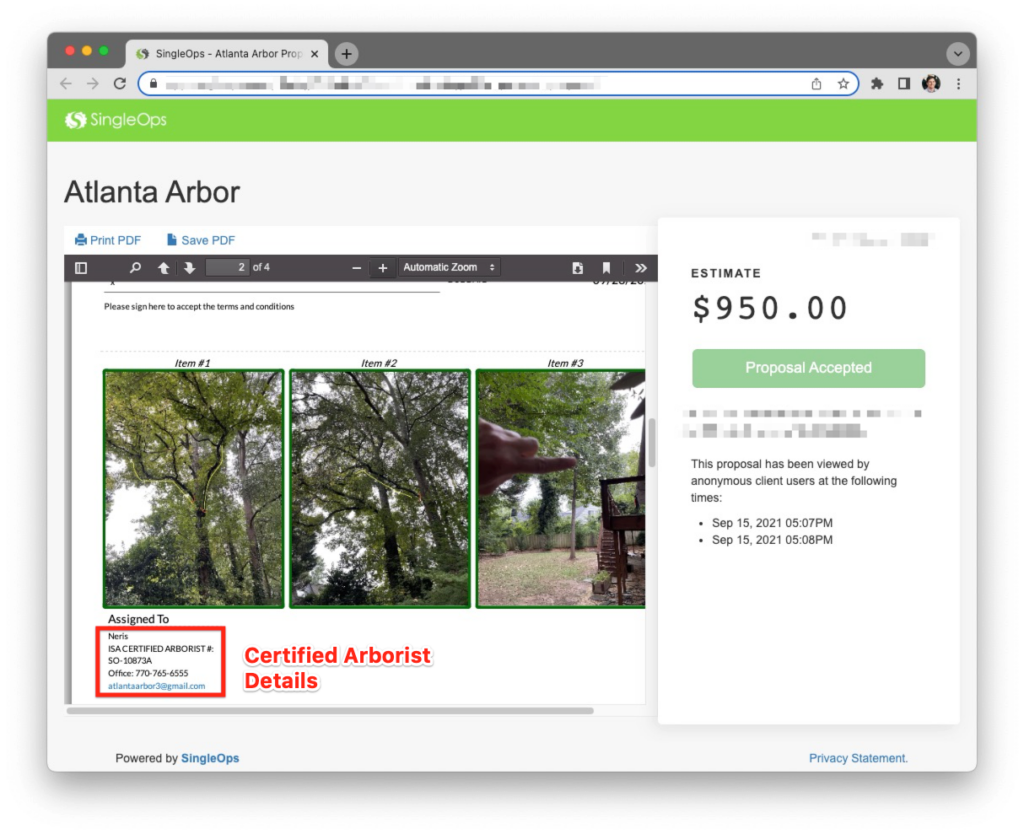
A tagging feature allows the company to find certification information easily, including which employees are qualified to do what jobs, as well as when the renewals are due.
“For example, let’s say you have lots of different types of certifications in our software. You could use those as tags and make up all the different types of tags for each certification,” Garner explains. “You could set up as many tags as you want for your company’s particular needs and apply those tags to employees, and then be able to search on those tags to recall which employees you tagged or are due (for renewal) in 2022 or 2023.”
Growing need
Credentials can give a company a sales advantage over their competitors, both in maintaining existing customers and attracting new ones. Tracking the credentials can let your customers know how qualified your team is.
“It can really help you set yourself apart from competitors and help them (clients) have a lot more trust and confidence in the estimates they receive and the work that’s being done,” McCormick says, noting that, if the data is entered into the SingleOps system, it will automatically be displayed in emails, estimates and other customer communications. “They (tree care companies) don’t sign up for SingleOps to track those things, but if they’re signed up to make their sales process more efficient and to grow, this is, literally, part of it.”
Having a crew with credentials and certifications can be a selling point for some and a requirement for others. Sprague’s company, Carroll Tree Service, is a large company and does some of its work for larger and sometimes public projects.
“We do a lot of subcontracting for contractors on construction sites with tree-preservation work, and some of them are secure facilities and government facilities, so it comes into play there,” he says. “We do a lot of the larger institutional work for sizable colleges and private institutions where that’s a big selling point. If we do a complex sales proposal or tree-care-management plan for a large university, having our level of credentialing and professionalism is very beneficial.”
For some proposals, the submittal package can run from 150 to 200 pages, and can include credentialing information, training information, safety documentation and possibly submittals on materials the company will be using.
“However, if I lined up our company next to 20 other tree companies in this region, there might be one or two that are pursuing those same types of contracts,” Sprague says. “Most of them are doing small residential and basic commercial stuff. And you know they have to have a tree-expert license in the state of Maryland, but most of those buyers aren’t concerned with (more certifications).”
Sprague estimates that 70% of companies in the tree care industry have 25 or fewer employees, which makes personnel easier to keep track of.
Garner says there hasn’t been a huge demand for this feature for tracking certifications, but it can be an advantage for a small company as it’s growing.
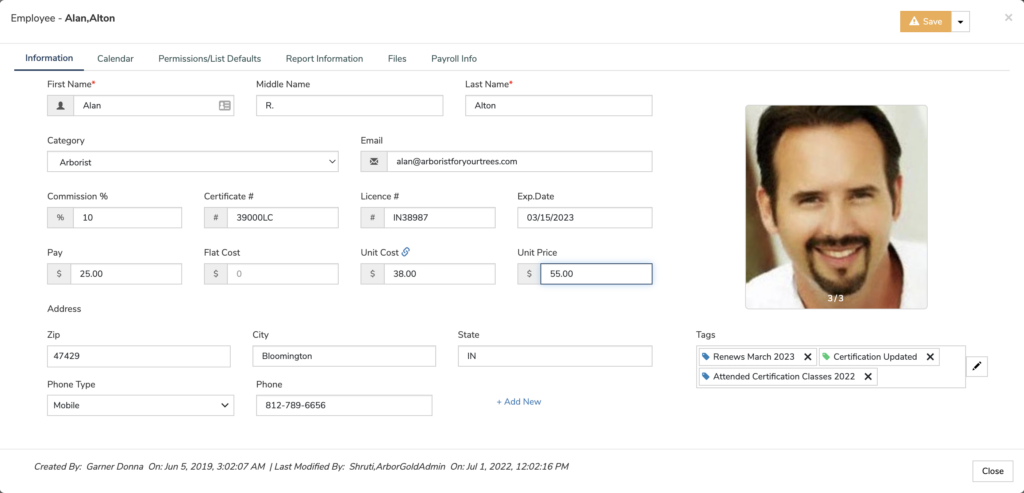
“The larger your company gets, the harder it gets to manage that information on an Excel sheet, for example, or on Google docs,” Garner says. “For our users, it’s easier to store that information inside the program they’re already using. You also can assign employees to crews. You can assign them to a category, like climber or estimator. The other use for this, in terms of having employee tracking, is to know how much time (workers) spend on climbing versus ground time for insurance purposes.”
Free to focus on the work
An earlier, Windows-based version of an Arborgold product (it’s now cloud-based) had industry-specific licenses and credentials built in, but the feature was underutilized. This was the 1990s and early 2000s, and Garner feels it may have been a feature ahead of its time.
“(Arborgold) is primarily a customer and job-management system,” she says. “We manage equipment, we manage employees, we manage job costing and tracking and all kinds of other things around that. We will continue to build out even more features in our employee module.”
Garner says that Arborgold enhances its product in response to customer feedback, so they may be building this area out in the future.
“Our main use for putting employees in our software is really for job costing, but you can store all that extra information on employees that you probably couldn’t (as easily) in QuickBooks,” she says. “The traditional accounting programs don’t have a filing cabinet to store documents in, which, of course, you could keep on Google Drive. It is so much nicer inside our software, because it’s searchable. You can’t really do that in Google Drive so easily.”
Garner says tree care business software that tracks credentials may not be high on many priority lists, but may be valuable for a small company whose focus is the work in the field. McCormick agrees.
“(License renewal dates are) just easy for anyone to lose track of, especially when you, individually, need multiple certifications (and) they all expire at different dates,” says McCormick, who compares it to having an annual car registration due, multiplied over a workforce and different types of registrations. “(With our software), you know what you need to do to keep them active and renewed or all separate and different.”
And, like a selling point for any software, the idea is to keep the workforce in the field and not tied down to administrative tasks.
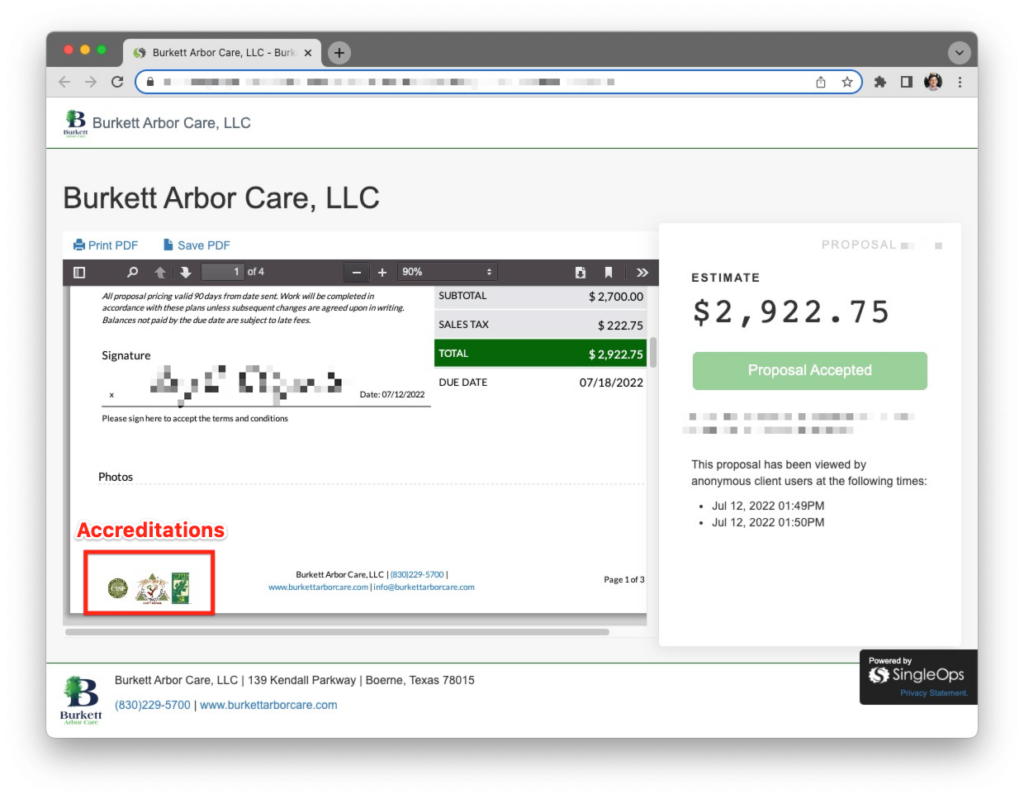
“It’s a challenge for your team, and you want them out there selling new work; you want them out there performing the work that has been sold,” he adds. “So, to ease that burden on the employees and on your office for having to manage all of it, putting a system in place can help folks stay focused on what really matters for you and your business, and can protect your business by helping them stay up to date with all this.”
The bottom line
Over the past six years, Sprague says, he’s converted his company’s workflow to the point where it’s almost totally electronic, using Microsoft’s SharePoint platform. “As we are talking, it’s occurring to me that, essentially, I could do the same thing on that same platform with (credentials),” he says, including setting up automatic reminders.
And that is apparently the key for adding credential tracking. There are solutions out there, including general business software and tree care-specific software. For the right company, solving the right problem, the tech solution is there.
Want to learn more about credentialing? Click here for more info!


